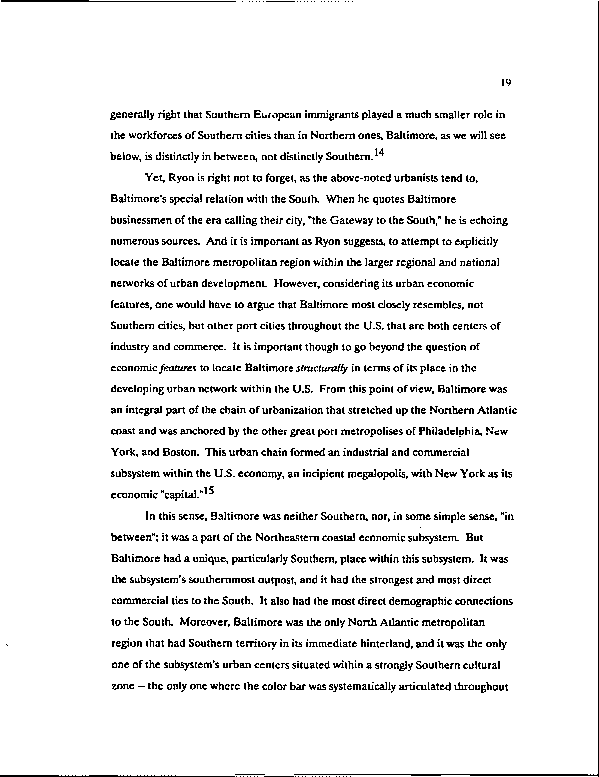|
19
generally right that Southern European immigrants played a much smaller role in
the workforces of Southern cities than in Northern ones, Baltimore, as we will see
below, is distinctly in between, not distinctly Southern.14
Yet, Ryon is right not to forget, as the above-noted urbanists tend to,
Baltimore's special relation with the South. When he quotes Baltimore
businessmen of the era calling their city, "the Gateway to the South," he is echoing
numerous sources. And it is important as Ryon suggests, to attempt to explicitly
locate the Baltimore metropolitan region within the larger regional and national
networks of urban development. However, considering its urban economic
features, one would have to argue that Baltimore most closely resembles, not
Southern cities, but other port cities throughout the U.S. that are both centers of
industry and commerce. It is important though to go beyond the question of
economic features to locate Baltimore structurally in terms of its place in the
developing urban network within the U.S. From this point of view, Baltimore was
an integral part of the chain of urbanization that stretched up the Northern Atlantic
coast and was anchored by the other great port metropolises of Philadelphia, New
York, and Boston. This urban chain formed an industrial and commercial
subsystem within the U.S. economy, an incipient megalopolis, with New York as its
economic "capital. ^
In this sense, Baltimore was neither Southern, nor, in some simple sense, "in
between"; it was a part of the Northeastern coastal economic subsystem. But
Baltimore had a unique, particularly Southern, place within this subsystem. It was
the subsystem's southernmost outpost, and it had the strongest and most direct
commercial ties to the South. It also had the most direct demographic connections
to the South. Moreover, Baltimore was the only North Atlantic metropolitan
region that had Southern territory in its immediate hinterland, and it was the only
one of the subsystem's urban centers situated within a strongly Southern cultural
zone - the only one where the color bar was systematically articulated throughout
|

